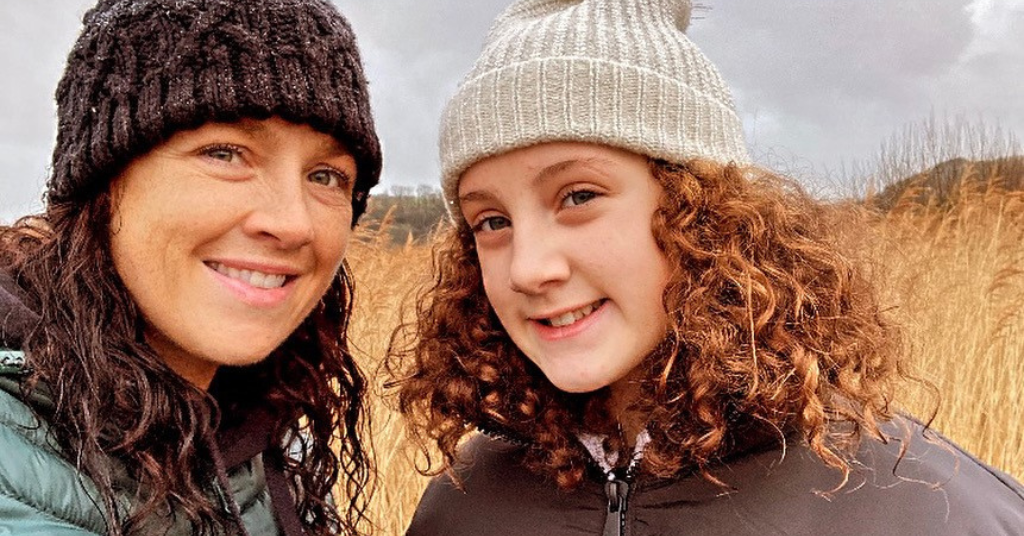Study: Deaf representation in the entertainment industry
December 19, 2022Researchers prove accessibility of the cochlea
December 26, 2022Deaf mother, athlete, and teacher of the deaf

Kristy Hopkins is a deaf mother, athlete, and teacher of the deaf in Cardigan, West Wales. She has a deaf child. Hopkins also launched a platform called Hands 2 Hear.
Deaf Mother and Athlete
Hopkins is an athlete on the Wale Deaf rugby team. While the team was established just before COVID, they have been chosen to play for the World Cup in Argentina in 2023. These athletes show that “there are no barriers when it comes to being deaf,” Hopkins says.
“There are no barriers when it comes to being deaf.”
When she’s not playing rugby, Hopkins loves spending time with her family, which includes her fiancé and their two children, Macsen and Ffion-Haf. They enjoy going on walks, traveling, and visiting family in the area. Hopkins is passionate about learning language. She is currently studying for her BSL3 (British Sign Language 3) qualification.
Teacher of the Deaf
As a Qualified Teacher of the Deaf, Hopkins works with ages ranging from babies to 25. As part of her job, she travels to various settings. Hopkins explains, “The main part of my job is to ensure that their hearing devices are all working, doing speech discrimination testing on them, and then pre/post teaching. It’s the best job ever!”
While there is a lot of paperwork to complete behind the scenes, Hopkins finds immense joy in her job. She enjoys watching her students gain language skills, increase their confidence, become their own best self-advocate, and accept their deaf identity.
Having hearing loss can have its pros and cons at home and in the workplace. On the job, Hopkins experiences listening fatigue daily. Meetings on Teams require her full attention and focus so that she can write down the notes correctly. Background noise can’t always be removed, which causes a person with deafness to put more energy into listening. Hopkins jokes about how she can remove her hearing aids when her children are too noisy to get that much needed peace and quiet.
Read more: Listening is Exhausting
Walking the Road Together
Both Hopkins and her daughter, Ffion-Haf, have unique hearing loss stories. Hopkins has a moderate-severe, sensorineural hearing loss, diagnosed at about eight years old. With the background noise in school, Hopkins would mentally “turn off” due to listening fatigue. School was a struggle. Even though her journey was arduous, Hopkins uses it to encourage her own students. She says, “I went through a long phase of not accepting my deafness in my teens and throughout my university years and refused to wear my hearing aids! Now, as a QToD, I do everything I can to empower my students to fully embrace their deafness!”
Ffion-Haf, Hopkins’ 13 year old daughter, has her own story of working through and overcoming her deafness. When Ffion-Haf was born profoundly deaf, her mom was advised to not use any sign language or Welsh. However, Hopkins embraced her daughter’s deafness. She decided to give her daughter the choice of whether to use sign language, oral language, or both modalities. The move was to give Ffion-Haf a cochlear implant so that she could learn how to use spoken language and hear the world around her. Starting at a young age, Ffion-Haf also joined the Deaf community. But it was hard to be immersed in the culture without knowing sign language fluently. Now, Ffion-Haf embraces both the Deaf and hearing communities by using both British Sign Language (BSL) and spoken languages: Welsh and English.
A Mother’s Perspective
Hopkins gives her perspective on choosing to give her daughter cochlear implants. “Before deciding to go ahead with a cochlear implant for your child, you’ll need time to think about the long-term commitment you’re making,” she advises.
Hopkins discusses the importance of recognizing that cochlear implants don’t instantly perfect sound and language. Sometimes there is the misconception that after the cochlear implant surgery and activation, everything will run smoothly. Many factors determine the success of implantation. Ffion-Haf unfortunately had to undergo three different implantations on one side. Their experience is a good reminder that while uncommon, implantation rejection can occur.
Implantation is a lifelong commitment that requires more time than may be expected. Hopkins’ personal experience led her to cut down her full-time job to part-time to make sure she could care for her daughter the best way she could. She explains, “There is a great amount of work to be done pre-surgery. [There are] many factors to consider post-surgery, i.e. risk of surgery, weekly audiology appointments, tuning sessions, auditory rehabilitation sessions, speech and language sessions, QToD sessions and ENT appointments. They are wonderful pieces of technology but it’s important to be mindful of the negatives also. On saying that, we don’t have any regrets. Our daughter is trilingual, attends a mainstream school, and is fully integrated into the hearing, and most importantly, deaf world.”
Hands 2 Hear Platform
Hopkins’ daughter was in the hospital for six weeks due to an infection that caused one of her implants to be surgically removed. It was during this time that Hopkins’ eyes became open to see the great need for education surrounding deafness and hearing loss. During their stay in the hospital, no one was able to communicate with her daughter via BSL. Hopkins expresses that “As a result of this, I developed a new platform on social media called Hands 2 Hear. It aims to give parents/caregivers, teachers and professionals, resources, advice and information and on how to help and improve the lives of children and young people who are deaf.”
Hopkins told the Western Telegraph that as a mum to a profoundly deaf child, she feels that it will be a really useful platform for all.”



